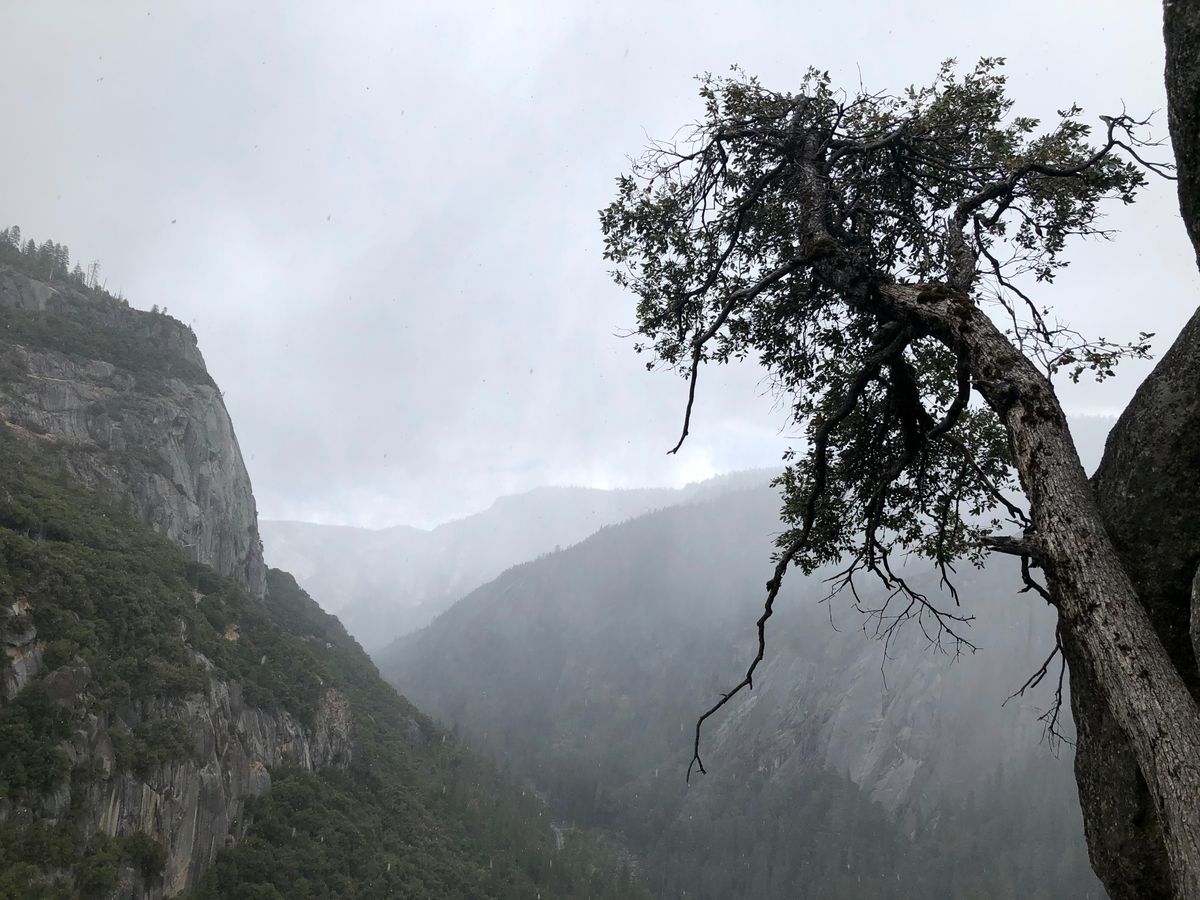Rope Soloing Systems
It goes without saying rope soloing can be dangerous. Check your systems and don't fuck up.

On a fixed line
Being able to top rope solo is an amazing tool for working a project. For me personally, it’s been really nice to drop a line on something that’s out of my pay grade, flail, figure it out, maybe figure out the gear, and then once I think I can do it, I’ll ask someone for the catch. It’s also just really peaceful to be out by yourself. One of the most magical moments I’ve experienced was going down to the Phoenix in Yosemite, dropping a line on it, and spending a few hours alone with Cascades falls on my right, swallows zipping past me, watching a freak snow storm blow through the valley.
For top rope soloing, sometimes called traxing, I was really inspired by (aka stole) Mikey Schaefer’s fix and follow system, so I use a CAMP Lift as my primary device, and a micro-traxion as my secondary device. Both of these are on some small lockers. In this case, primary meaning should I fall, that device will be fully weighted while the secondary will not. I use a length of bungee with figure eights on each end to keep the Lift up right. You’ll also need to carry a GriGri with you, a single ascender with a foot loop, and a daisy (or draws) to go in direct and weight your ascender when transitioning from climbing to lowering. The system feeds really smoothly, and what’s nice about the Lift is it’s pretty easy to disengage and give yourself a foot or two of slack back. That being said, double micro-traxions is really common. I personally do not like using the new nano-traxion when using a Lift as it introduces just enough friction into the system that the Lift stops feeding smoothly.


Up a bolt ladder
This is a really simple technique for getting up a sport climb to a bolted anchor. I’ve used it a lot for fixing a line either to trax the route or do re-bolting work. You’ll need a GriGri, a daisy chain, a clipstick, a jumar with a foot loop, a quick link, and draws. A DMM Revolver is really nice to have for this.
It’s essentially rope solo aiding, so pretty simple all in all. You self belay yourself with the GriGri, and the first two bolts act as your anchor. You never take the GriGri off. When jugging, you’ll be using a jumar and GriGri.
Attach the end of your rope to a draw using a figure 8. Stickclip the first bolt. Jug up, go in direct to the bolt, and then re-attach your figure 8 to the bolt with the quick link. This makes up the first part of your anchor. Pull out a bunch slack through the GriGri and stickclip the next bolt. Jug up, go in direct, pull up a bunch of slack, clip stick the third bolt. At this point, you’re going to build an inline two piece anchor, so tighten up the system and clove the rope to the second bolt. Now you just repeat the painful process of jugging, going in direct, pulling out slack, stickclipping the next bolt x 10.

On lead
I’ve been experimenting with using a GriGri+ for free lead rope soloing. It’s certainly not ideal as paying out slack is still a pain in the ass (although in lead mode and a thin rope, it’s fairly easy), but it’s better than dropping a lot of money on a silent partner. Still figuring this one out.
For the device, I specifically have an unmodified GriGri+ on an anti cross loading carabiner. I use a shock cord with figure 8s on the end to keep the carabiner upright. A nano-traxion on my gear loop manages the rope cache to prevent back feeding. I girth a 30cm sling to my tie in points and also connect the trax to it. With slip knots in the flaked rope, we end up with a backed up system. The idea being that if the GriGri fails, the slipknot will feed into the trax and jam against it. The gear loop with definitely break, but because the trax is attached to the girthed sling, we might survive. The big question is whether or not the nano will break. Hopefully we never find out.
I recently attempted a rope solo of Mental Blocks on Wallface in the Adirondacks. I was originally planning on having the rope flaked in my bag and leading with just my rack on my harness, but quickly realized the one big downside to this set up is that your rope will absolutely drag across traversing, wandering climbs and is a huge pain. For climbs like that, it’s simple easier and more convenient to carry the rope in your bag on your back.

